Rıdvan Kayar, Emre Tokuç, Ömer Yüksel, et al.

Erectile dysfunction (ED) is a multifactorial disorder that
is common in men and has a significant impact on quality of
life. Its pathophysiology is complex and includes neurogenic,
psychogenic, endocrine and, most importantly, vascular
components [,]. Vascular aetiologies have led to ED being
frequently recognised as an early sign of cardiovascular disease
(CVD). In this context, it has been suggested that ED may act as a
subclinical indicator of CVD []. There is increasing evidence in
the literature of the effects of inflammation and oxidative stress
on erectile function. The study by Roumeguere et al. shows
that elevated levels of IL-18 and myeloperoxidase-dependent
oxidised LDL in the corpus cavernosum impair endothelial
function by inhibiting e-NOS mRNA expression. These findings
support the critical role of inflammation and oxidative stress in
the pathophysiology of ED [].
Frank's sign (FS), defined by Sanders T. Frank in 1973, is
known as a diagonal fold in the earlobe and has been reported
in the literature as a physical marker of cardiovascular disease
[]. This marker has attracted attention because of its association
with coronary artery disease and other atherosclerotic conditions.
Several studies have shown that FS is associated with endothelial
dysfunction, inflammation and oxidative stress []; endothelial
dysfunction and inflammation are factors that play a critical role
in the pathogenesis of atherosclerosis and are among the basic
pathophysiological mechanisms of ED. Metabolic syndrome
is a cardiometabolic disorder consisting of components such
as abdominal obesity, hypertension, dyslipidaemia and insulin
resistance, and is strongly associated with ED [].
The fact that FS is associated with these components of the
metabolic syndrome raises the question of the usefulness of this
physical marker in predicting ED. It has been reported in the
literature that FS impairs endothelial function as an indicator of
inflammation and oxidative stress in the vessel wall. Therefore,
it is thought that FS may be a predisposing factor that may
predispose to the development of ED. Indeed, the fact that ED
and CVD share common risk factors makes it necessary to
investigate the prognostic value of FS [,].
The aim of this article is to review the potential role of
FS in the prediction of ED and its use in clinical practice. A
comprehensive review of the existing literature will assess
the relationship between FS and ED and CVD, its prognostic
value and its place in clinical practice. This evaluation should
contribute to the development of new approaches to the use of
FS in the diagnosis and management of ED.
Kamil Gökhan Şeker, Yusuf Arıkan, Deniz Noyan Özlü, et al.
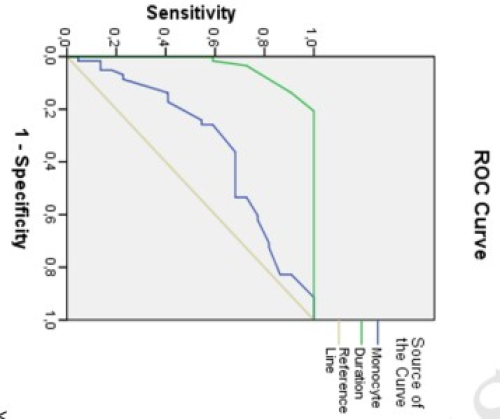
Testicular torsion is a urological emergency requiring urgent
diagnosis and treatment which may lead to organ loss as a result
of gonadal necrosis and may cause infertility problems in the
future. Although it is observed in all age groups, it is more
common in children [].
The main treatment of testicular torsion is emergency
surgery and the decision of detorsion and testicular fixation or
orchiectomy is made during surgery. In the absence of objective
criteria for assessing testicular viability, the fate of the testis is
entirely at the discretion and experience of the surgeon. There
are a limited number of parameters that can be used to predict
preoperative testicular salvage. The most important factor
known to predict testicular salvage is the duration of symptoms.
As reported in the literature, irreversible testicular loss begins
after the first 6 hours [].
In recent years, there have been many studies evaluating
hematological parameters in the differential diagnosis of
testicular torsion []. However, only a limited number of
studies have investigated the role of hematological parameters
in predicting the possibility of preoperative testicular viability/
orchiectomy. The results are conflicting and there is still no
consensus. In addition, most of these studies include the adult
age group [-].
In this study, we investigated the role of preoperative
hematological parameters in predicting testicular salvage in children
undergoing emergency scrotal exploration for testicular torsion.
Mubariz Aydamirov, Kadir Karkin, Zafer Gökhan Gürbüz
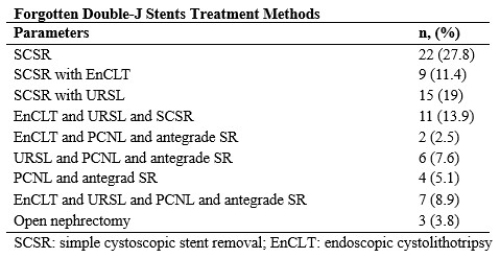
Ureteral double-J (DJ) stents have an important place in
urology practice. DJ stents are frequently used, especially in
urological surgeries, to relieve obstruction and provide urine
flow from the kidney to the bladder, to heal the ureter, and
to prevent complications. Historically, Zimskind et al. first
relieved ureteral obstruction by endoscopically inserting a DJ
stent in 1967 []. However, ureteral stents have a certain period
of use. In general, they must be removed or replaced within 6
weeks to 6 months. This is because, in addition to their serious
benefits, there is serious literature information indicating
that they increase morbidity and mortality when they remain
longer than the specified periods [-]. It is very important
to comply with this period and to raise awareness of patients.
However, despite it being explained many times in writing
and verbally, some patients forget that they have a stent. In the
literature, it was determined that up to 12% of patients with
ureteral stents have forgotten ureteral stents (FUS) []. Studies
about the complications of FUS found that DJ stent occlusion,
encrustation, migration, stone formation, hydronephrosis, renal
failure, sepsis and even death may occur [].
Another important issue with FUS is how the stent duration
affects treatment. When we look at the studies, it is more
difficult to treat stents that remain in place for more than one
year []. In addition, treatment approaches may vary depending
on the location and size of encrustation and whether the stent
is fragmented or not. Extracorporeal shockwave therapy
(ESWL), endoscopic cystolithotripsy (EnCLT), ureteroscopic
lithotripsy (URLS), percutaneous nephrolithotomy (PCNL) and
open surgery can be performed for the management of FUS
complications [,]. In this study, we aimed to present our 10-
year experience of FUS treatment.
Necmi Bayraktar, Ferhat Eren
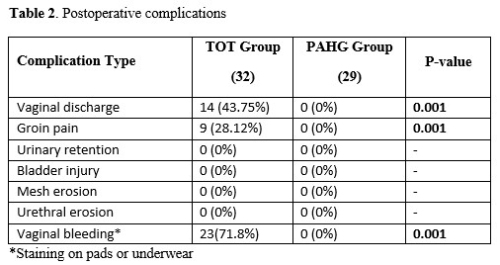
Stress urinary incontinence (SUI) is a common health problem
affecting millions of women worldwide and seriously impairing
their quality of life. Defined by the International Continence
Society (ICS) as "involuntary leakage of urine during exertion,
exercise, sneezing, or coughing", SUI is a condition that about
half of women experience at some point in their lives []. SUI
notably contributes to physical and psychological discomfort
that negatively affects individuals" social life and overall quality
of life.
Recent complications in the surgical treatment of SUI
have notably undermined confidence in traditional treatment
methods. Mesh-based surgical approaches, such as transobturator
tape (TOT), have been associated with serious
complications including bladder injury and mesh erosion []. In
this context, there is growing interest in alternative treatment
modalities that are less invasive and reduce the risk of meshrelated
complications.
Given the complications associated with traditional meshbased
surgeries, our study turns to emerging alternatives such
as PAHG (polyacrylamide Hydrogel) injections, aiming to
evaluate their efficacy and safety. Degradation-resistant PAHG
was approved by the Food and Drug Administration (FDA).
This polymer gel contains 2.5% cross-linked polyacrylamide
and 97.5% water for injection and is considered a promising
option for treating urinary incontinence []. However, available
data on the long-term efficacy and safety of PAHG injections are
limited, making it imperative to compare this treatment option
with other surgical methods.
This study aimed to compare the efficacy and safety of
PAHG injections with those of TOT surgery for the treatment
of SUI, to reveal the differences between these two methods,
and to determine which of these treatment options is more
appropriate in clinical practice. By filling the knowledge gaps
in the existing literature, we aimed to provide evidence-based
recommendations to improve patient satisfaction and outcomes
in SUI treatment.
Aravind T K, Somanath Karmungikar, Sandeep Kumar, et al.
Penile strangulation by foreign bodies is one such rare occasion
that requires the urologist to rush to emergency for immediate
intervention. Both motives and materials of strangulation have a
long list ranging from application for sexual gratification by metallic
rings to pranks gone wrong using threads []. Penile strangulation is
seen over a varied age group of the population with cases even noted
in the paediatric age group termed the penile tourniquet syndrome
[]. Irrespective of the cause, strangulation causes disruption of
blood flow to the penile tissues leading to outcomes ranging from
simple penile oedema to complete gangrene based on the duration
and degree of strangulation. We here depict 5 cases of penile foreign
body strangulation, their management and final outcomes with a
brief review of scarce available literature on the subject.
Emre Aykanlı, Özgur Ekici, Ömer Büyüktepe, et al.
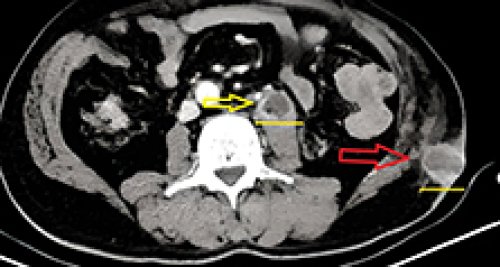
While TCC is most commonly seen in the bladder, it is
also rarely seen in the upper urinary tract. Upper urinary tract
TCC accounts for 5% of all TCCs []. Treatment approach for
these TCCs generally involves open-laparoscopic or robotic
nephroureterectomy and cuff resection. Laparoscopic surgery,
which was first defined as a minimally invasive procedure by
Clayman et al. in 1991 [], has become quite frequently applied
due to milder postoperative pain, shorter hospital stay, and
faster recovery compared to open surgery. On the other hand,
non-surgical treatment approaches may be given priority in
metastatic disease.
Skin metastases originating from renal cell carcinoma (3.4-
4.0%) bladder carcinoma (0.84-3.6%), prostate carcinoma
(0.36- 0.7%), and testicular germ cell tumors (0.4%) have been
reported at indicated incidence rates []. The incidence rates of
skin metastasis in TCCs originating from the upper urinary tract
are not completely known. Port site metastasis (PSM), which is
rare after laparoscopic surgery, is defined as a recurrent tumoral
lesion in one or more trocar entry sites on the abdominal wall
[]. In urology practice, PSM was first reported in 1994 by
Stolla et al. in a patient with bladder tumor []. After this first
report, more than 50 urological PSM cases have been reported
to date [].
In this article, we present a case of TCC metastasis at the left
inguinal port site three months after the patient"s first operation
for renal tumor.
Burak Barış Öztürk, Melih Şimsek, Ganime Çoban
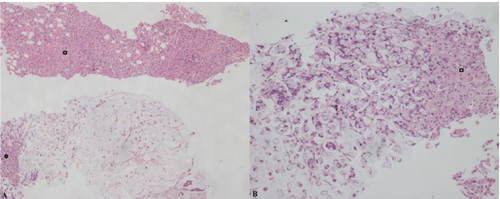
Primary signet-ring cell carcinoma (PSRCC) is a rare tumor
of the urinary bladder [,]. The most common type of bladder
cancer is urothelial carcinoma, which occurs in 90% of all cases
[,]. Cases of adenocarcinoma of the bladder are extremely low
(2%) []. PSRCC of the bladder accounts for 0.12–0.6% among
the different histological subtypes of bladder carcinomas [,].
PSRCC of the bladder was first described in 1955 by Otto
Saphire []. To the present day, data on just over 300 cases with
such a finding have been published []. In a research that has
been performed between Sept 1991 and Aug 2016, and included
a total of 2778 bladder cancer patients, only five (0.18%) patients
were diagnosed with PSRCC [].
Signet ring cell carcinoma (SRCC), classified as a subtype
of adenocarcinoma, most commonly occurs in the colon and
stomach. Evaluation of clinical, radiological and immunohistochemical
findings of involvement of other systems is
important in the differential diagnosis to determine the primary
origin of cancer. Here, we aimed to share a rare case of PSRCC
of the bladder who had a longer survival time than the median
overall survival reported in the literature.